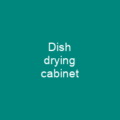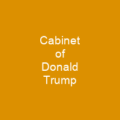Understanding Cabinets: The Heartbeat of Governance
Imagine a government as a vast ship navigating through turbulent waters; who steers this vessel? It’s the cabinet, a group of individuals appointed to guide and manage its operations.
The Role of a Cabinet in Governing
A cabinet is more than just a collection of ministers; it’s the heart that beats within the body of governance. These are the people who rule or advise a head of state, typically from the executive branch. They’re appointed by heads of state or government and often report to a head of government. But what exactly do they do?
Think of them as the brain behind the scenes, making crucial decisions that affect millions. Some cabinets are collegiate decision-making bodies, while others serve more advisory roles. Regardless of their specific functions, they manage day-to-day operations and respond swiftly to sudden events.
The Evolution of Cabinets
Have you ever wondered where the term ‘cabinet’ came from? It’s a fascinating journey that traces back to ancient times.
The concept originated from the Italian word “gabinetto,” which referred to a small, private room used as a study or retreat. Over time, this evolved into what we now know as cabinets in government. In many countries, the term ‘government’ itself refers to the top executive body, while others use terms such as ‘cabinet,’ ‘college of ministers,’ or ‘senate.’
Selecting Cabinet Members
Choosing cabinet members is a process that varies greatly between countries. In presidential systems, the president selects them, but their selection can vary based on the country’s specific rules and practices.
In parliamentary systems, things get more interesting. The cabinet must be confirmed by parliament and must enjoy the continuing confidence of the legislature. This means that if a motion of no confidence is passed, it could lead to the removal of an entire government or individual ministers.
The Composition and Functionality
A typical cabinet consists of around ten to twenty ministers who collectively form the government’s executive branch. In some countries like Sweden, Finland, and Estonia, a Chancellor of Justice is included in the cabinet as well.
Forming a government often requires coalition agreements between multiple parties, leading to the creation of a coalition government. This type of government relies on continued cooperation between participating political parties to retain the confidence of parliament. In multi-party systems, a government platform is negotiated to ensure that all participating parties support their cabinet’s policies.
Interestingly, researchers have found an inverse correlation between a country’s level of development and the size of its cabinet. More developed countries tend to have smaller cabinets, suggesting a more streamlined approach to governance.
The Inner Workings
Cabinet deliberations are secret, and documents dealt with in cabinet are confidential. Most of the documentation associated with these deliberations will only be publicly released after a considerable period, depending on provisions of a nation’s freedom of information legislation.
In theory, the prime minister or premier is first among equals. However, the prime minister is ultimately the person from whom the head of state takes advice (by constitutional convention) on the exercise of executive power. This includes powers such as declaring war, using nuclear weapons, and appointing cabinet members.
The result is that the cabinet is de facto appointed by and serves at the pleasure of the prime minister. The cabinet can be reshuffled or replaced at any time, making it strongly subordinate to the prime minister.
Opposition and Shadow Cabinets
While the government has its cabinet, the opposition also has a role to play. A shadow cabinet consists of leading members of an opposition party who hold critic portfolios ‘shadowing’ cabinet ministers, questioning their decisions and proposing policy alternatives.
The Westminster System and Beyond
The Westminster cabinet system is the foundation for cabinets as they are known at federal and provincial jurisdictions in countries like Australia, Canada, India, Pakistan, South Africa, and other Commonwealth nations. Under this system, a cabinet under a presidential system of government is part of the executive branch.
In communist states, de facto power is often held by the politburo, an organ of the communist party, which is in practice subordinate to the state cabinet but technically overseen by the central committee. In China, political power has been further centralized into the Politburo Standing Committee of the Chinese Communist Party.
As we navigate through the complexities of governance, one thing remains clear: the role of a cabinet is crucial. It’s not just about making decisions; it’s about shaping the future. So, who will be the next captain of this ship? The answer lies in the hands of those appointed to serve as part of the cabinet.

You want to know more about Cabinet (government)?
This page is based on the article Cabinet (government) published in Wikipedia (retrieved on February 27, 2025) and was automatically summarized using artificial intelligence.






